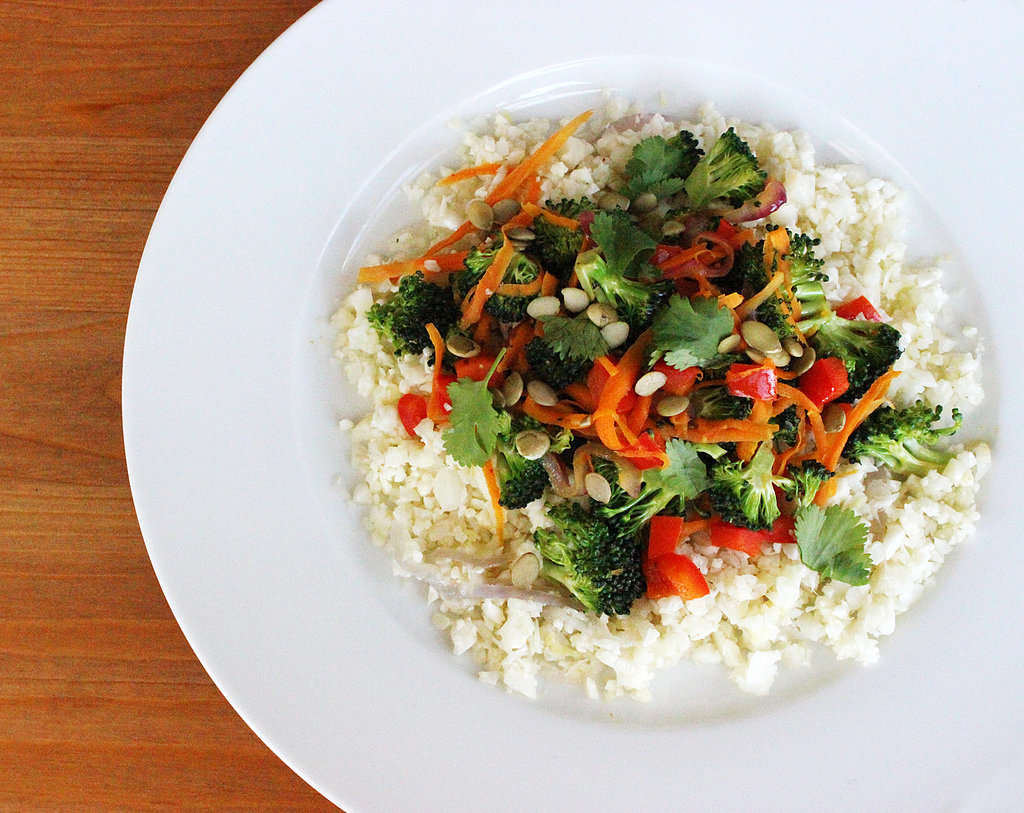
Often I am asked questions like “Are carbs good or bad for me?” “I heard potatoes and rice are bad.” “What is the best fruit to eat?” All valid questions even though I am always striving to move my clients and myself away from tagging foods as either good or bad. All food, real and whole food vs. processed goods disguised as such, has unique nutritional profiles that offer the body energy, insulation, repair and immune system support. Fortunately for us we live in an area where food insecurity is practically non-existent and we have the luxury of even thinking about these sorts of questions.
And therein lies the rub. Unlike Matt Damon, stuck on Mars with a limited food supply, ours is typically overabundant. And carbohydrate foods, as mentioned above are usually the quickest to prepare and relatively inexpensive (think about what you might pay per pound for some potatoes vs. protein like meat or fish). No, this is not a carb bashing post or a low carb diet is the best recommendation. It’s because I have counseled many diabetics and others in a pre-diabetic state that I have chosen to focus on this food group now.
So how do I answer these questions and what advice would I give? Even if you’re not diabetic I recommend we first consider what your unique metabolic profile or health objective is. Certainly if you have diabetes, pre-diabetes or any form of insulin resistance (polycystic ovary syndrome or PCOS, high triglycerides, central adiposity or you accumulate most of your weight in the abdominal area) these are very valid questions. Let’s first approach these questions, not from a good food/bad food list, but from information about how they function and affect things like blood sugar, insulin production, food cravings and mood for many people.
Today I want to focus on just one category of carbohydrate foods and these are starches, and within that category I am featuring rice. Why? I am inspired by my Asian clients who are challenged on one hand by a strong ethnic food preference and food culture that involves this food. Rice is the most widely consumed grain especially in Asia. For those in South and coastal regions of India it is a dietary staple. Yet many South Asians also struggle with insulin resistance, heart disease and diabetes so this food seems to play a contradictory role in culture and health. Not fair, I know.

Let’s first do a quick review: Rice is a starch, a type of carbohydrate. Bread, pasta, noodles, and grains such as oats, quinoa and bulgur are starches as well. Other foods in this category are fruit, milk, juice and other sugar-containing beverages, as well as concentrated sweets like candy, cake, pie, honey, molasses and table sugar. During digestion, all carbohydrates are converted to sugar and released into the bloodstream, where they are either used for energy or stored as fat. But not all carbs are created equal. Or more accurately, not all carbs have the same effect on blood sugar. The measure of the effect of carbs on blood sugar is called the glycemic index (GI). You’ve read this and seen those food GI lists.
Glycemic Index: In general high GI carbs like sugary beverages, instant mashed potatoes and white bread digest very quickly and cause a rapid spike in blood sugar followed by a surge of insulin and fat storage. As blood sugar crashes not too long afterwards, fatigue, moodiness, and food cravings may ensue.
Low GI carbs like steel cut oats, fresh fruit and most vegetables, are digested slowly. As a result, your blood glucose rises slowly than falls gradually over a longer period of time. You feel better because your hunger and mood are more controlled. And most importantly, particularly if you have insulin resistance, you are giving your pancreas a break by alleviating the need to release a quick surge of insulin thus improving or reducing the risk of diabetes and its associated complications.
Several GI food lists have been developed, assigning foods GI numbers relative to the glucose standard of 100.

Well it turns out these simplistic looking lists of high, medium and low GI foods are not so simple. There are other factors that affect the GI of foods. I would like to focus on the biggest factor which is processing.
Processing: The more a food has been processed, the easier it is for the digestive enzymes to attack it quickly, and the higher the GI. To choose less processed foods, think about how that starch occurred in nature, and how much processing was required to get it to its current form.
Since we are featuring rice let’s looks closer at its harvesting and processing:
After harvesting the rice kernel, the hull (aka husk) is removed. What you have now is brown rice as the bran is still intact along with the germ and the endosperm.
- If this brown rice is processed (milled and polished) further to remove the bran and the germ, what we get is white rice.
- If after harvesting, the complete rice kernel, before removing the hull is soaked, steamed and dried and then the hull is removed, you get parboiled rice.

What does this mean from a nutritional point of view: White rice is milled so that the bran and germ are removed and due to this process, the nutritional quality of white rice is reduced-it is almost devoid of fiber, and micronutrients like B-vitamins and iron. Being low in fiber, white rice tends to cause a sharper rise (spike) in our blood sugars. By law in the US, white rice has to be enriched, so the lost micronutrients are added back (fortified).
There are several varieties of white rice such as long grain (less starchy), medium, short grain (very starchy-also called “sticky” rice), parboiled (partially cooked, then dehydrated) and aromatic rice such as basmati and jasmine (long grain varieties).
Basmati rice in moderation is one of the healthiest types of rice as it has a relatively lower GI. Jasmine rice in comparison has a high GI.
Nutrition profile for white rice: 1 cup of cooked white rice: 45 g carbs, 0.6 g fiber, 4 g protein
Is brown rice better?: Because brown rice has its bran and germ intact it has a higher fiber content than white rice. While the macronutrient profile (carbs, proteins and fats) is very comparable for white and brown rice, it is the micronutrient profile (vitamins and minerals) distribution that sets them apart.
So brown rice is more nutritious than white rice. And because the consistency is thicker some typically consume lesser portions than white rice which automatically lowers the glycemic impact. There are several varieties as well, such as long grain, medium, short grain and brown basmati.
Caution: Eating excessive amounts of brown rice, especially if you are sedentary and/or insulin resistant, would have an adverse effect on blood glucose.
Nutritional profile: 1 cup of cooked brown rice: 45 g carbs, 3.5 g fiber, 5 g protein

What about other rice forms?
Black rice sometimes referred to as “forbidden rice” also has a lower GI. And research studies have found that black rice contains health-promoting antioxidants called anthocyanins, at levels similar to those found in blueberries and blackberries.
Nutritional profile: 1 cup of cooked black rice: 48 g carbs, 3 g fiber, 7 g protein
Wild rice: Wild rice is actually the seed of a North American grass and not rice at all. Wild rice was the staple of Native Americans. It is nutty and chewy in flavor and has twice the protein of white/brown rice. It is high in fiber so takes longer to cook. It is more nutritious than white rice as it has a lower GI, is not polished and a good source of phosphorus, magnesium and zinc and B-vitamin.
Nutritional profile: 1 cup of cooked wild rice: 35 g carbs, 3 g fiber 7 g protein
And if you are still desiring numbers or charts about relative GI values and effects:


If your food culture revolves around white rice, brown, black or wild rice may not be replacements. However I also ask my clients to be adventurous with new foods especially those that have wonderful health benefits. You may discover a texture and a flavor that really suits you. And while you are probably not going to completely eliminate one of your main staples (I get it – I am from Italian descent and please don’t ask me to eliminate bread or pasta completely!) perhaps you can eat it less often, decrease the portion, and go exercise to utilize the energy supplied by your favorite starchy food. Or you might like to try a different whole grain altogether like quinoa, bulgur or freekeh. All with a higher protein content vs. white rice.
And this idea of protein and other food constitutes eaten together with your starch brings me to another factor that influences GI and that is food combinations. Combining your carbohydrates, whether it’s with fat or protein slows down the rate of digestion and lowers the GI. So for a healthier snack that keeps you satisfied, have some nut butter with your apple, or spread a cheese wedge on your 100% whole wheat toast (keep the grain intact whether it is rice, wheat, oats, etc.).

At breakfast and major meals balance your plate appropriately. Not only will you lower the GI and carbohydrate load to your system (better blood sugar) you will get a complement of nutrients for satisfying hunger and promoting good health.
For a typical American-style breakfast perhaps a makeover is required:

And if you are Asian of any flavor here are some breakfast makeover ideas. Here is a swap a South Asian diabetic client made and is having improved blood sugars! He swapped dosas (a kind of pancake made from a fermented batter. Its main ingredients are rice and urad beans) and peanut chutney for an egg omelet with veggies or he has a piece of whole wheat toast with nut butter or avocado.


Perhaps you are wanting that rice for lunch or dinner – maybe both – could you eat less (as my same client does), add more fiber-rich veggies, or leave out the animal protein and add Greek yogurt or edamame to balance a vegetarian-style plate? Or swap the white rice for brown, brown basmati, wild or black rice for a change?


Or have you tried cauliflower rice? There are many Youtube videos and lots of great recipes to design your non-rice favorite stir fry. So think outside your typical food “comfort zone” for meals that work for your palate, ethnic preference and health profile!

Other fun facts about GI:
- To choose lower GI fruits, keep in mind the general rule that tropical fruits (bananas, mangos, etc.), have a higher GI than non-tropical fruits (apples, oranges).
- Pasta is a relatively low GI food – as long as you cook it al dente.
- Potatoes – especially white potatoes – usually spike your blood sugar. However if you cook and cool them you may increase a component called resistant starch which can decrease blood sugar response.
- Adding acid to a food lowers the GI. This gives you another great reason (besides flavor), to add a dash of lemon or balsamic vinegar to foods.
You see food and health are more complex than lists and charts. I encourage my clients to first understand and consider their individual and unique metabolic profile. Then YOU will know the answer to the questions: “Should I eat rice?” or “Are bananas, corn flakes, dosas and juice o.k. for breakfast?”



